What’s the first thing that comes to mind when you hear “airway protection”? If your answer is “endotracheal intubation,” you’re right on target! In this blog post, we’ll discuss why endotracheal intubation is such an important part of airway protection. Stay tuned!
Airway protection is a strong indication that a patient may need endotracheal intubation. Sometimes objectively meeting certain criteria or subjectively deemed by a provider.
There are the main indications for airway protection/ intubation:
– Inability to maintain an adequate airway (Protect your airway)
– Inadequate respiratory effort or inability to ventilate or move air in and out (Type-II Resp Failure)
-Inability to oxygenate to sustain life ( Type I Resp Failure)
-Provider’s discretion
The main intervention to protect the airway is endotracheal intubation. Endotracheal intubation is the placement of a tube through the mouth/nose and down the trachea. This is done to ensure that the patient can be provided oxygen and ventilation via mechanical ventilation.
There are a few different ways to do this:
– Direct laryngoscopy: A laryngoscope is placed in the mouth and used to visualize the vocal cords. The tube is then placed through the vocal cords.

(don’t mind the picture, the tube is backwards!! lol but its the best we can find)
– Video laryngoscopy: A camera is used to visualize the vocal cords. The tube is then placed through the vocal cords.
– Fiberoptic laryngoscopy: A small, flexible scope is passed through the nose and used to visualize the vocal cords.
How is an Endotracheal Intubation performed??
To intubate someone, you will need a laryngoscope and an endotracheal tube. The laryngoscope is inserted into the person’s mouth on the right side sweeping to the left, as you sweep to the left the blade is passed along the floor of the mouth, behind the tongue, and into the vallecula (the gap between tongue and epiglottis). From this position, a lift is applied at a 45-degree angle to bring the epiglottis forward over the blade and visualize the glottis. With proper visualization of the glottis, intubation can be achieved by passing an endotracheal tube through the vocal cords and into the trachea.

If endotracheal intubation is not done properly, there is a risk of serious complications. Airway trauma, esophageal perforation, and many more. Failed intubation attempts can also pose a great issue; for example, in normal RSI’s (Rapid Sequence Intubations) a patient paralyzed and not properly ventilated can suffer from anoxic injuries, some irreversible with even the potential of death. However, with proper technique and the ability to have a group of providers (Respiratory Therapists, Doctors, and Nurses) come together in the care of a patient, these risks can be avoided.
RESPIRATORY STAT!!!! WE NEED TO INTUBATE!!!
Endotracheal intubation can be deemed necessary for an of few different reasons we’ve mentioned before. Another main reason for endotracheal intubation is the provider’s discretion! What does that mean?!!! if the patient seems to be deteriorating to the point where the provider feels they may have difficulty meetings their own need to breathe or protect their airway via coughing, gag reflex, the ability to alert and orientated, and some other signs that may leave intubating as the only option.
So….for example, a patient comes to you with a SpO2 of 96%, HR 120’s, RR ~ the mid to late 20s on room air, initially, you probably wouldn’t think of a need for intubation, but if that same patient was unable to talk in complete sentences, using their stomach and neck muscles to help breathe may have the provider begin to consider intubation. Sure non-invasive ventilation would be the best move initially but say after some time the patient’s condition doesn’t improve. This could be considered as impending respiratory failure which depending on the provider could prompt the decision to intubate.
Another great example would be a patient presenting as unable to respond to any type of stimulus nor follow any commands, their airway may need to be protected prophylactically to prevent any deterioration of their ability to breathe. GCS less than 8….INTUBATE
Signs that Airway May Be Compromised:
The physical examination of the head and neck is important to determine if the airway may be compromised.
-Inspect the mouth for any obstruction
-palpate the thyroid area for any enlargement which could cause displacement of the trachea
-inspect the neck for any asymmetry which could indicate a mass compressing the airway
– palpate the mandible for symmetry as well as a range of motion to ensure that it is not trismus (limited mouth opening)
– inspect the tongue for any enlargement which could cause displacement of the airway.
Auscultate breath sounds over both lungs, noting any areas of decreased or absent sounds. If you have any suspicion that the airway might be obstructed, perform the modified Mallampati test. The patient’s mouth is opened wide and the tongue protruded as far as possible. The position of the soft palate, uvula, fauces, and tonsillar pillars is then noted with the maxillary incisors.
-Class 1: Soft palate, fauces, uvula, pillars visible
-Class 2: Soft palate, fauces, uvula visible;premolars or mandibular incisors seen
-Class 3: Only the hard palate and base of the uvula are visible
-Class 4: Only hard palate visible
Difficult Airway!! Get the Glide!!!
Though Direct laryngoscopy may be a preferred choice for those who are attempting to intubate. For any patient with a mallampati test resulting in either Class 3 or 4, the provider should utilize video or fiberoptic laryngoscopy to intubate the patient to increase the chances of a successful first attempt.
Trachea-Mental Distance
Another way to assess the difficulty one may have while intubating a patient is to check the tracheal mental distance. This is essentially a quick and dirty way to anticipate an interior airway. The way this trick is performed is by taking three fingers and placing them on top of the patient’s trachea using those three fingers you will measure the distance between the trachea and the tip of the chin. Once performed if the patient’s distance between the tip of their chin to the trachea is three finger widths or wider then it’s safe to assume that the patient’s airway would not be interior if it is three finger widths or shorter than an anterior airway should be anticipated and extra tools may be needed.
The final component of the physical examination is the assessment of the patient’s mental status.
When performing a physical examination on a patient, it is important to keep in mind that the signs and symptoms of a potential airway problem may be subtle. If there is any suspicion that the airway may be compromised, it is always better to be on the side of caution and take steps to protect the airway. Endotracheal intubation should be performed as soon as possible in these cases. Having tools such as a bag-mask device to ventilate the patient, a bougie in case of difficulty visualizing the airway, an LMA, and most importantly another person to assist in the intubation is vital.
The next step would be to do a quick check of the equipment you will need for intubation. This includes making sure you have an appropriately sized laryngoscope blade and handle as well as endotracheal tubes of various sizes. It is also important to have suction available as well as other airway adjuncts such as an oropharyngeal airway or nasopharyngeal airway.
Once all of this has been completed, the decision to intubate the patient can be performed. Airway protection is essential in preserving the ability to ventilate and should be done promptly to avoid any further deterioration of the patient’s condition.
The biggest and most valuable tip when it comes to intubation’s, is make sure you can manually ventilate!!
AS LONG AS YOU CAN BAG THEM YOU HAVE TIME!!

I can go on and on about one of our favorite topics; airway protection. Utilize this brief overview before clinical, or as a refresher when heading to work. To sum up, providers must be proficient in performing an Endotracheal Intubation. Providers should carefully evaluate patient needs and indications for intubation as errors can have severe effects on a patient’s quality of life. To ensure intubations are successful, mechanisms must be put into place to help providers monitor, adapt, and improve their practice. If you or someone you know is looking to become an experienced provider in intubations, consider these points before leaping! And lastly, if we’ve missed something feels free to share your insight, everyone is welcome! Leave a comment and let us know if we missed anything or something to add; we would love to learn more and get different perspectives. As always, thanks for reading!
When your patients can’t breathe, you gotta do what you gotta do! #airwaymanagement









